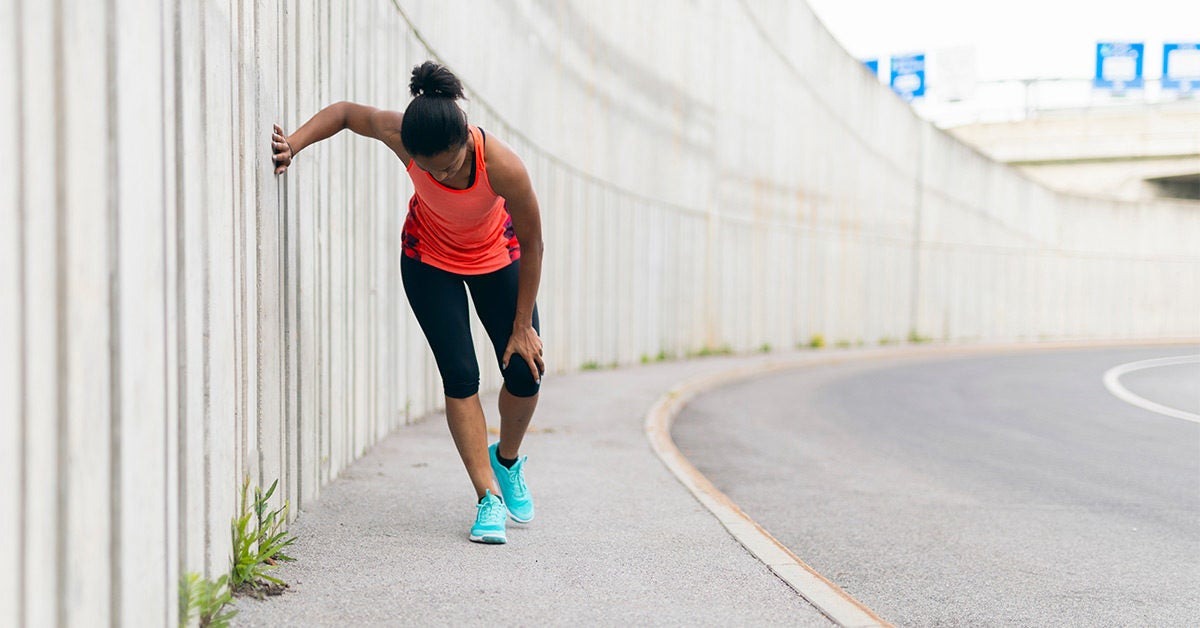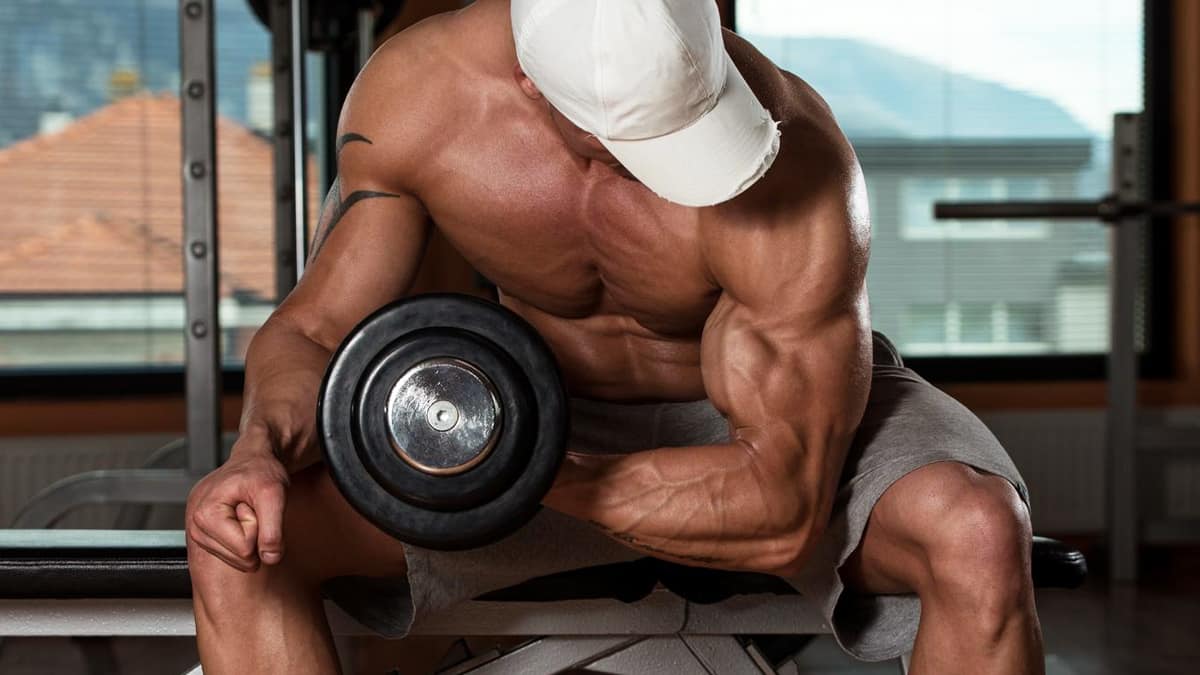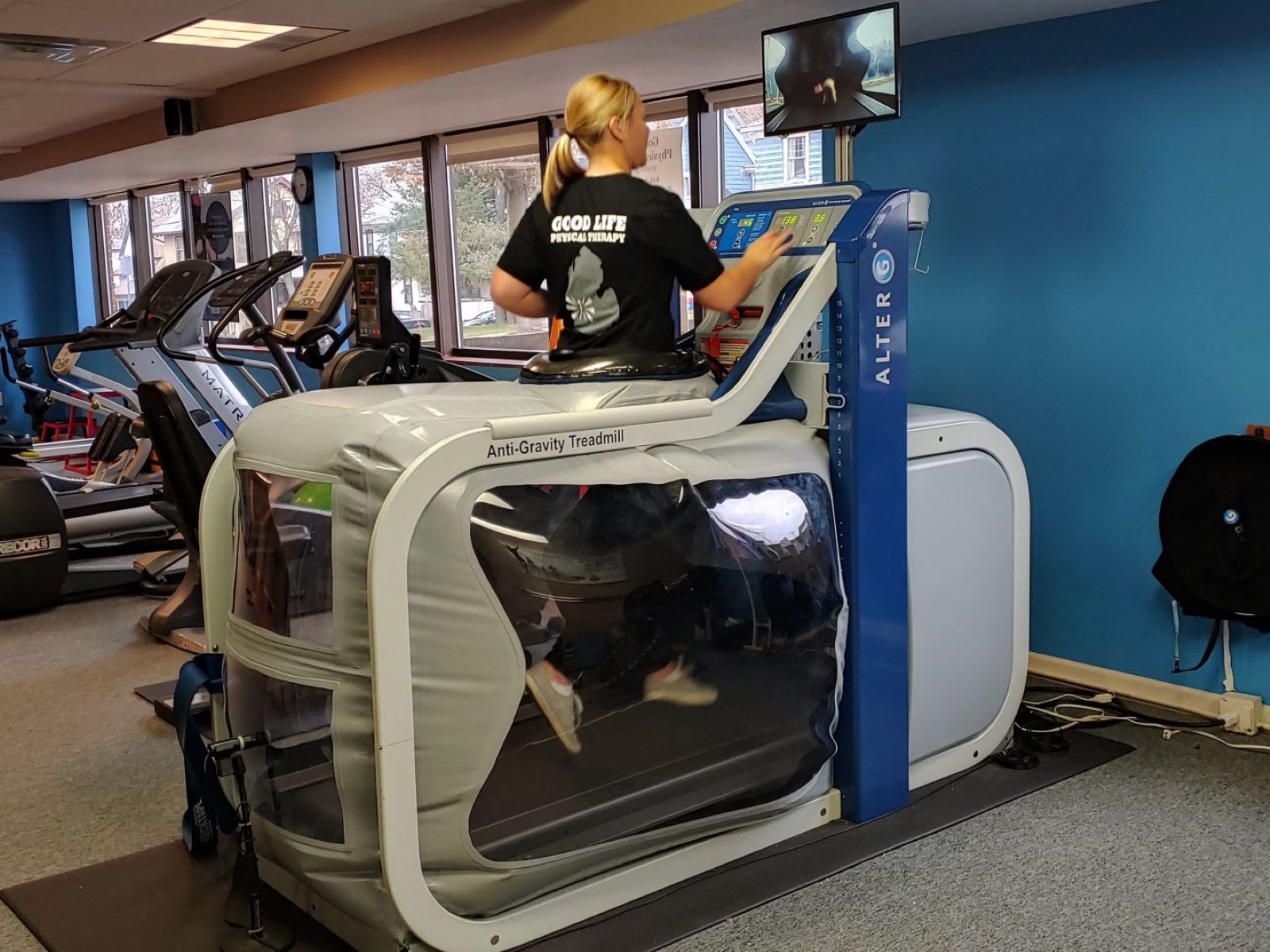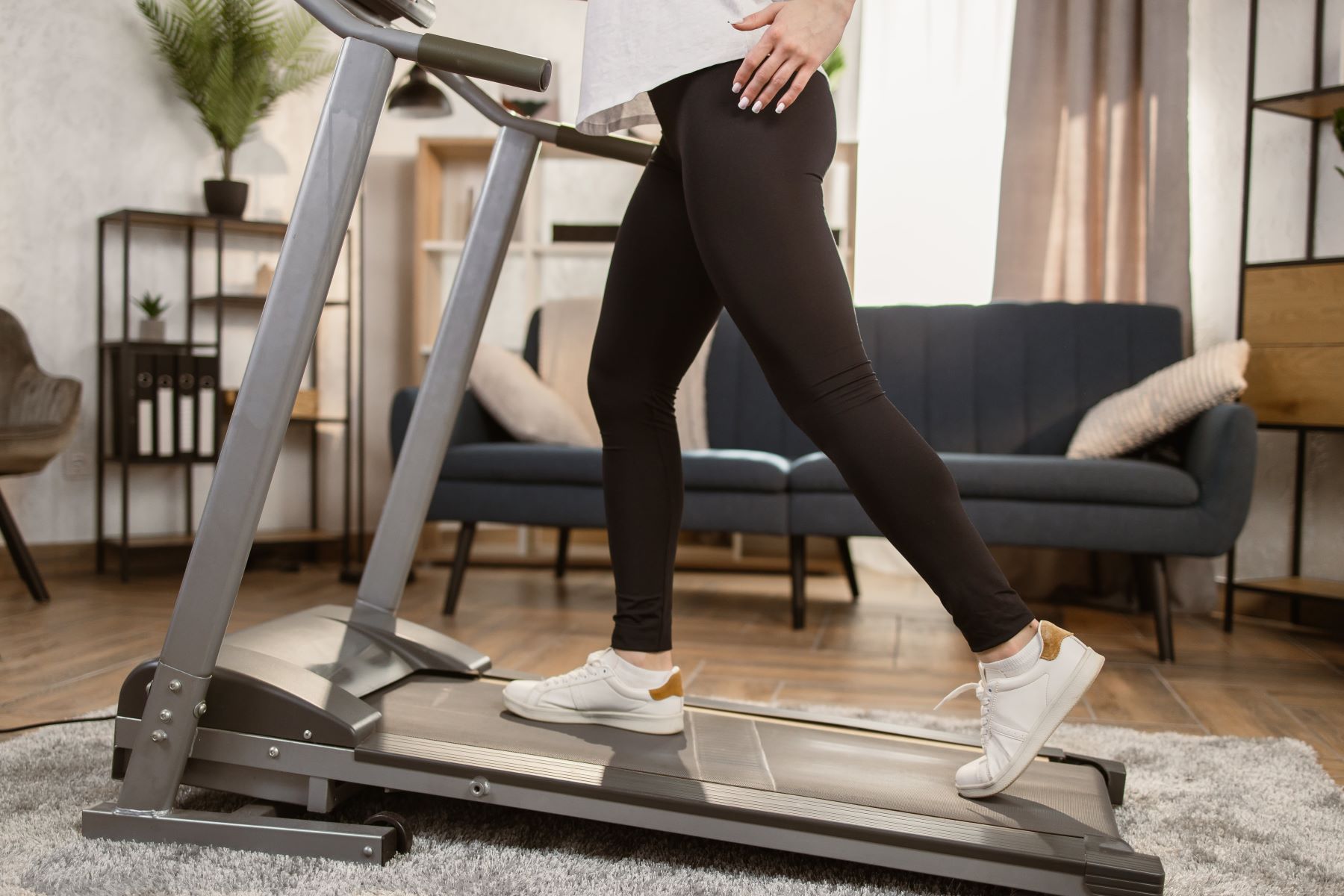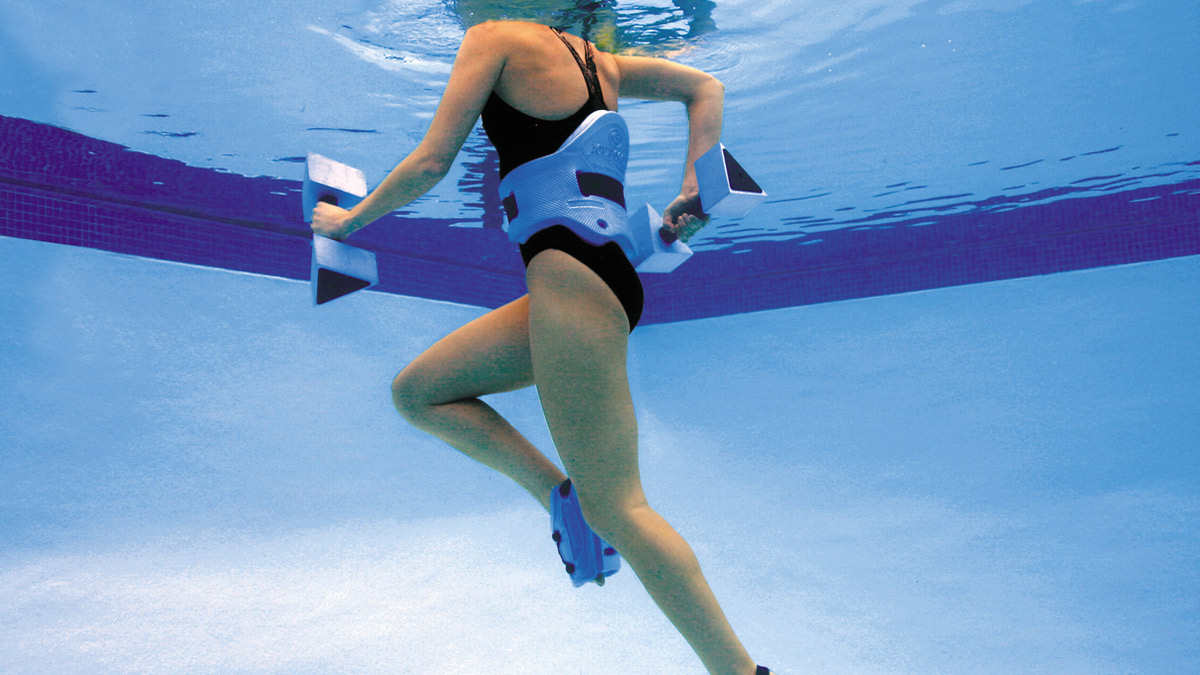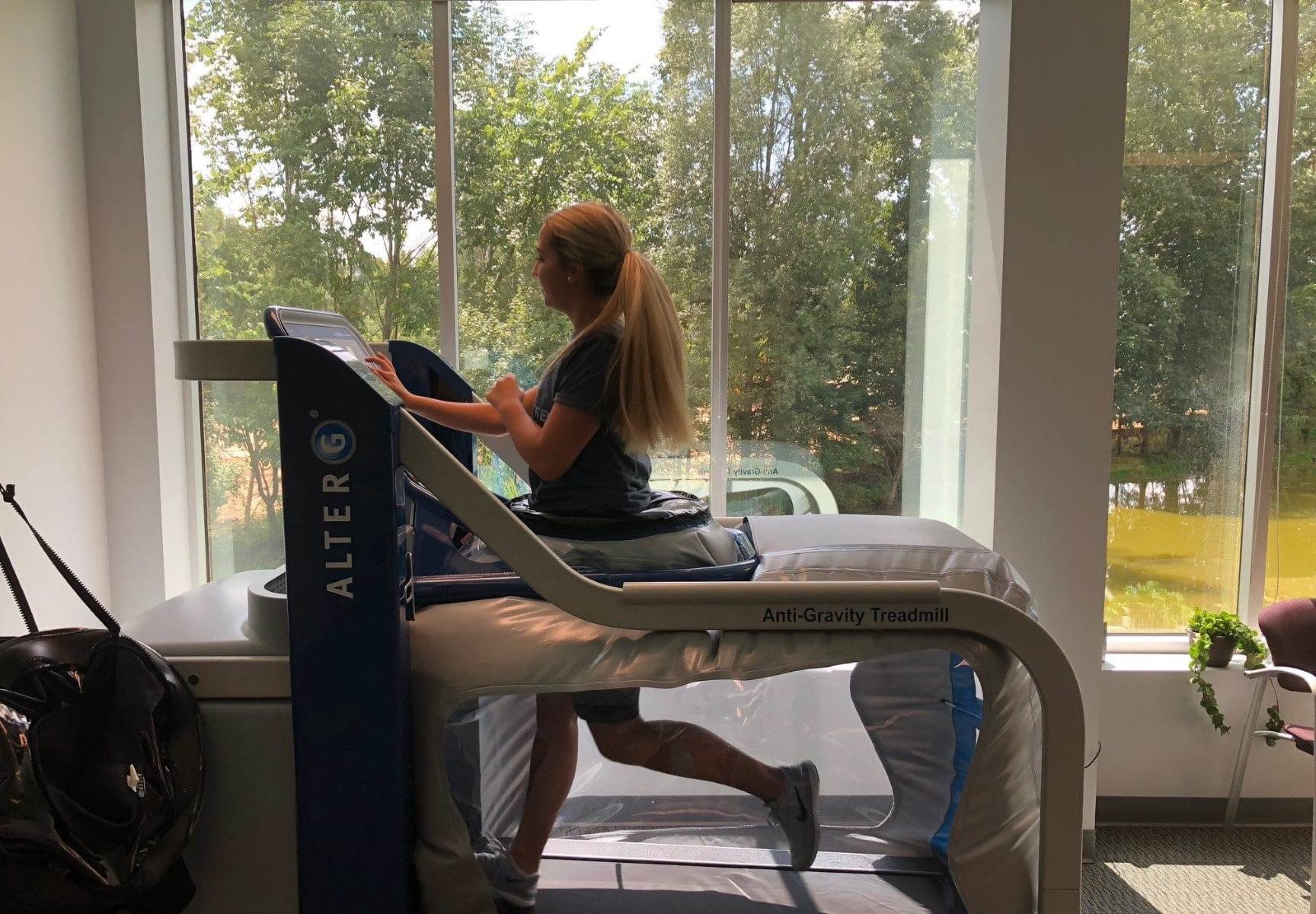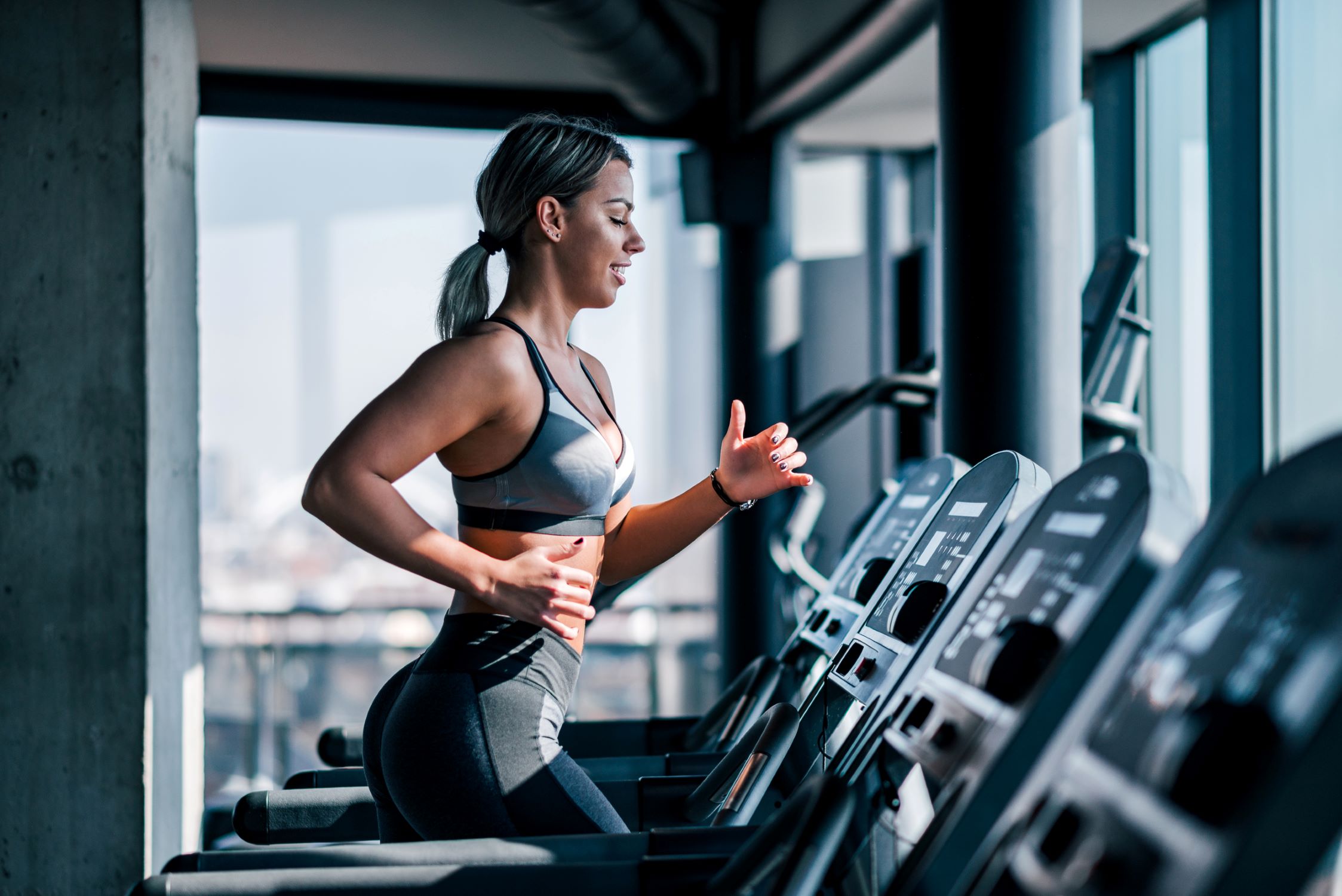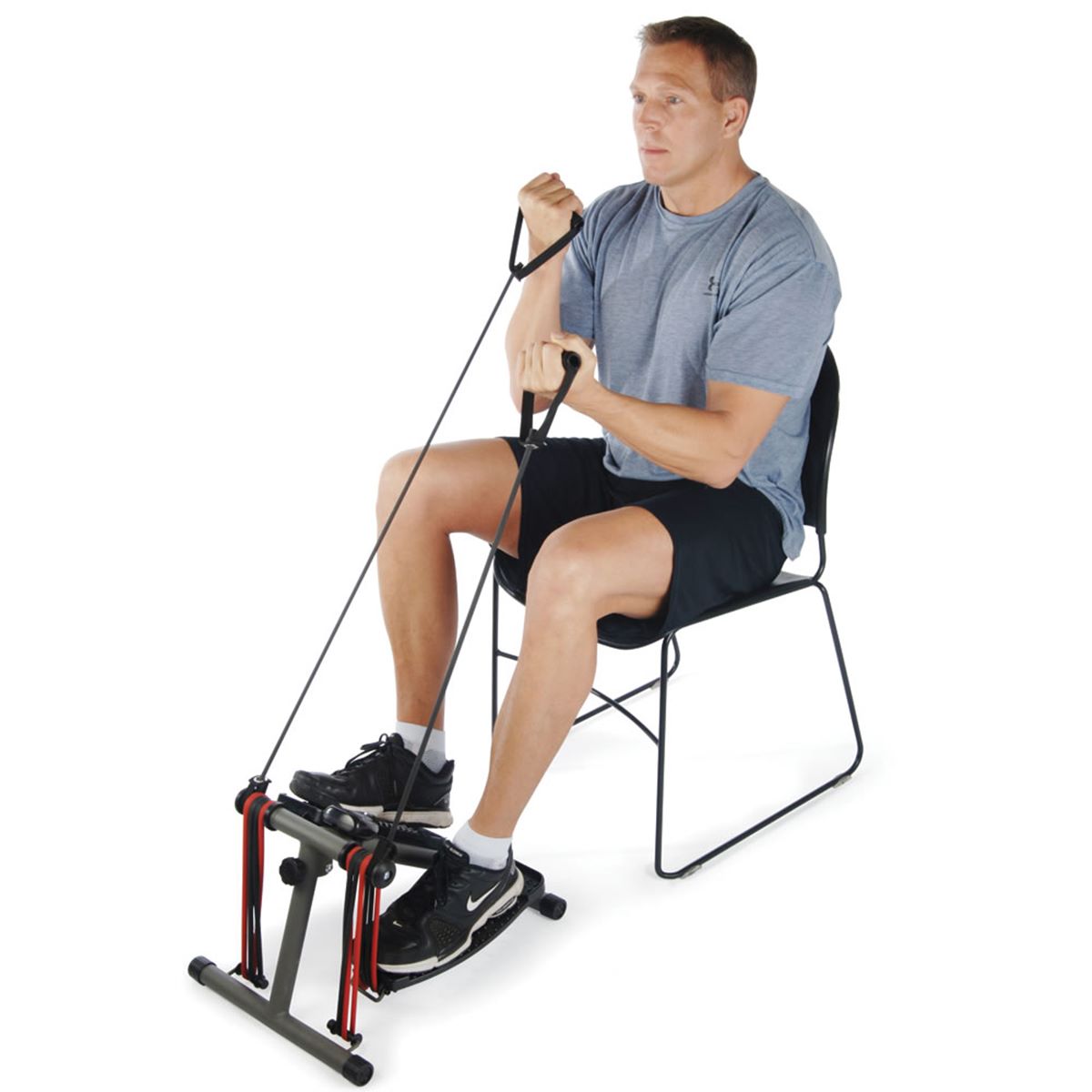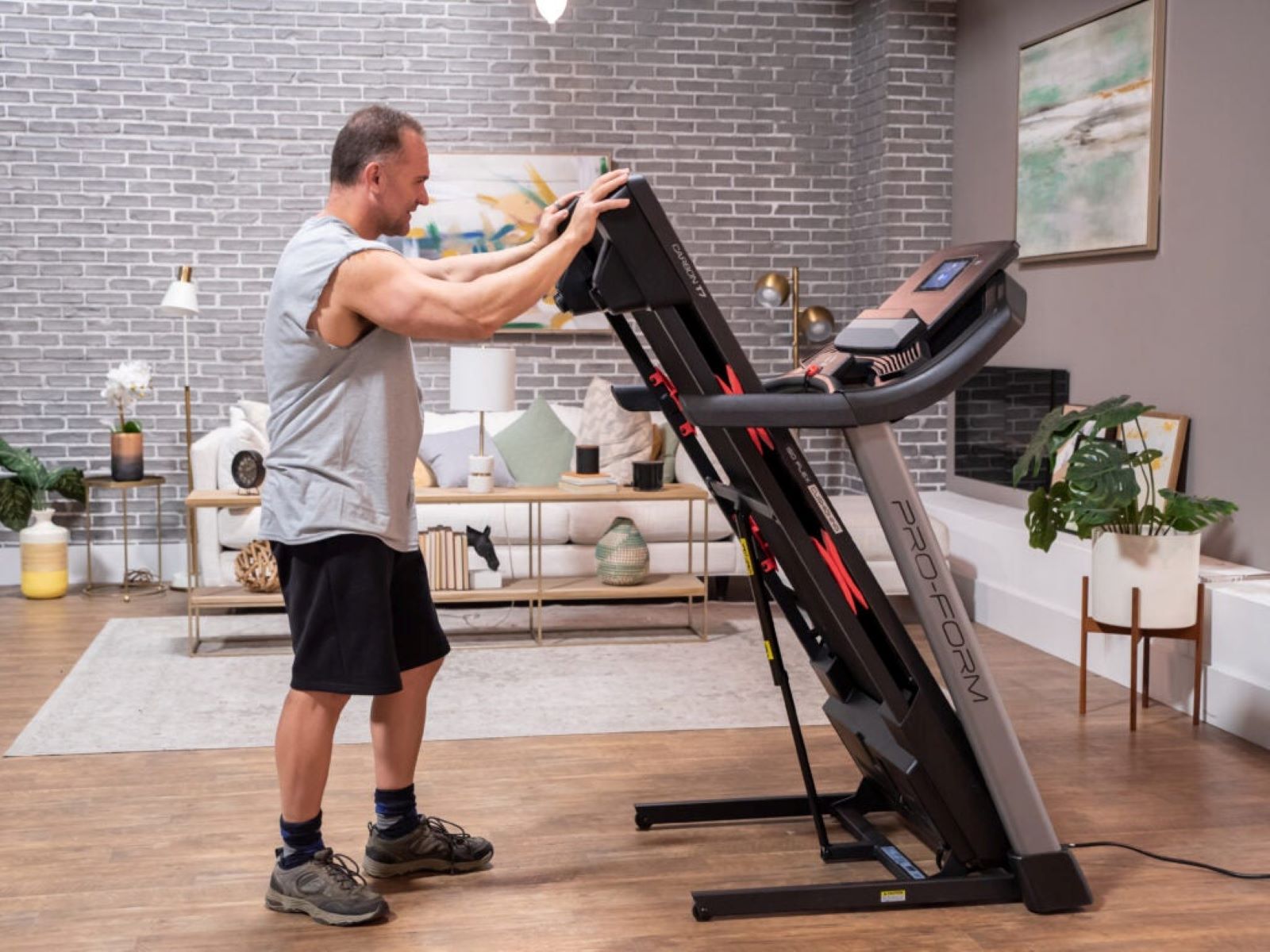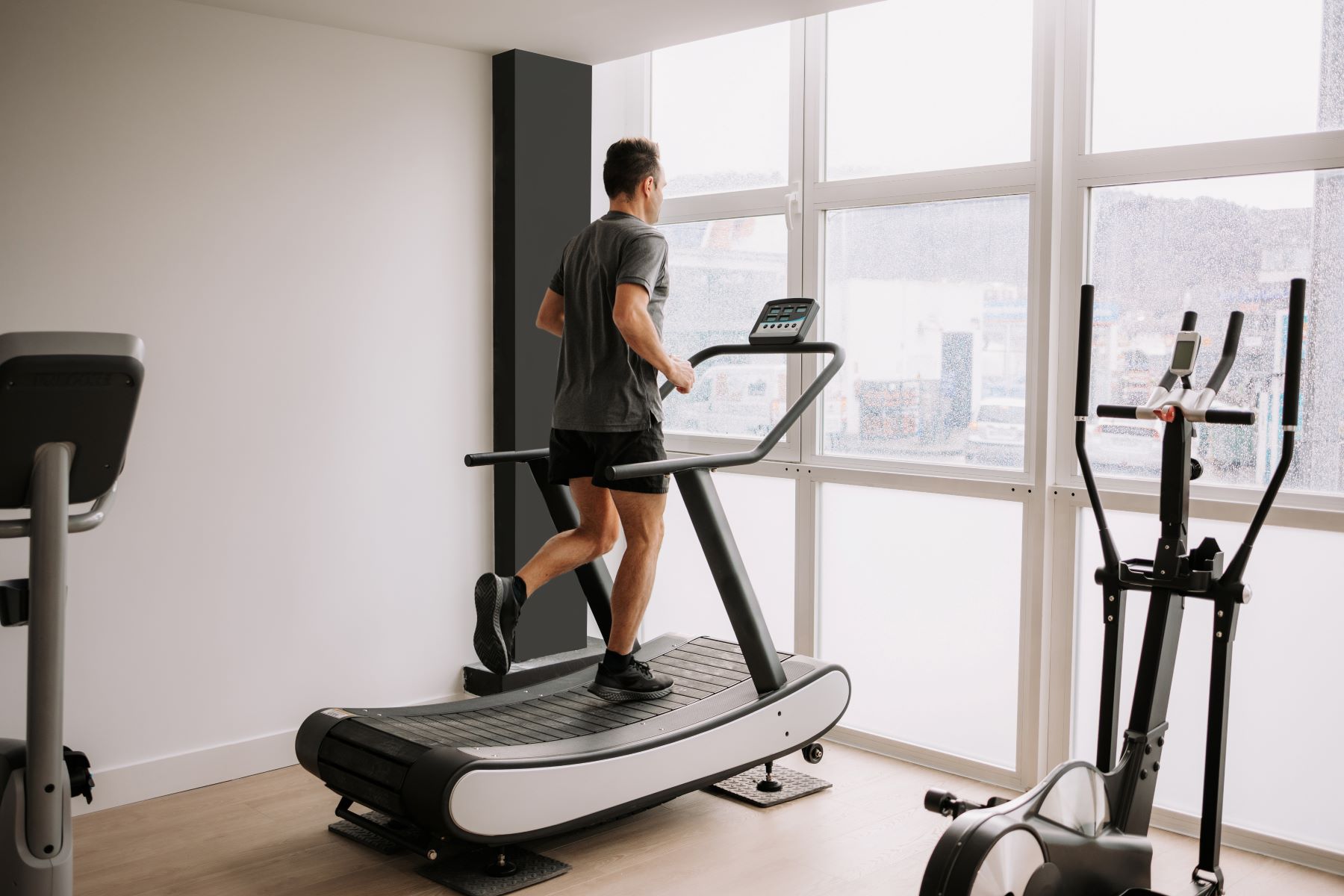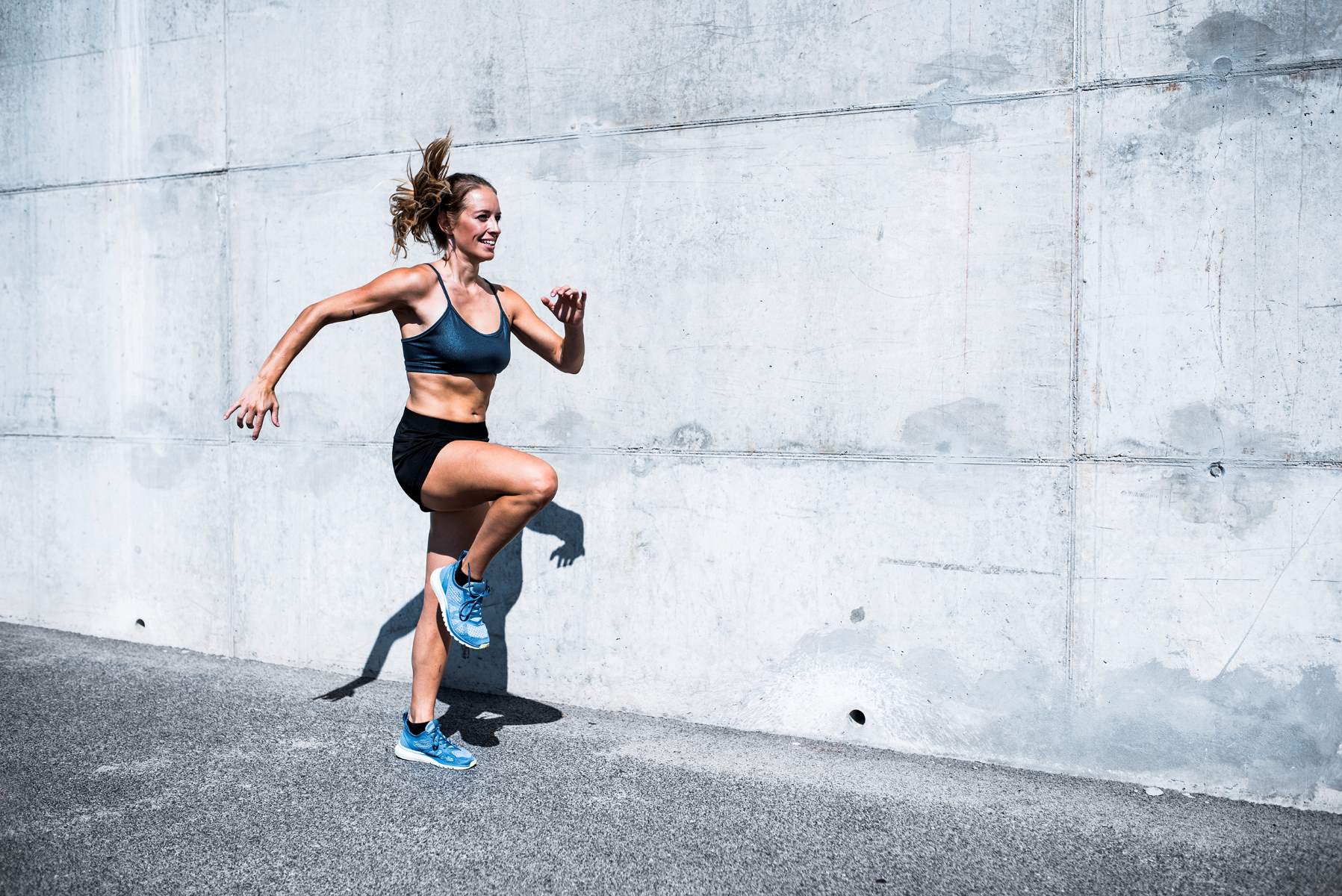

Featured
How To Workout Without Equipment
Modified: August 21, 2023
Discover the best ways to stay active and get fit without any equipment. Our featured workouts are perfect for exercising at home or on the go, helping you achieve your fitness goals anytime, anywhere.
Introduction
When it comes to staying fit and healthy, working out is essential. However, not everyone has access to a fully equipped gym or the time to visit one regularly. The good news is that you can still achieve your fitness goals by working out without the need for equipment. Whether you’re at home, on vacation, or simply prefer the convenience of exercising without machines or weights, there are plenty of effective exercises you can do to strengthen and tone your body.
Working out without equipment offers numerous benefits. First and foremost, it eliminates the need for expensive gym memberships or bulky exercise machines, making fitness accessible to everyone. Whether you’re a beginner looking to get started or an experienced fitness enthusiast, bodyweight exercises allow you to challenge yourself at your own pace and skill level. Additionally, these exercises engage multiple muscle groups simultaneously, leading to greater overall strength and improved coordination.
Another advantage is the flexibility and convenience it offers. You can work out anytime, anywhere, without the constraints of opening hours or travel time. Whether you have a small living space or a busy schedule, you can easily fit in a workout without relying on equipment. This can be especially beneficial during times when visiting a gym may not be possible, such as during a pandemic or when traveling.
Not only does working out without equipment save you time and money, but it also allows for greater creativity in your workouts. With a wide array of bodyweight exercises and variations available, you can customize your routines to target specific muscle groups and achieve your desired results. From strength training exercises to cardio workouts, you have the freedom to design a comprehensive fitness plan that suits your preferences and goals.
In the following sections, we will explore a variety of exercises and workout routines that require no equipment. Whether you’re aiming to tone your upper body, strengthen your lower body, tighten your core, improve your cardiovascular health, or achieve a full-body workout, we’ve got you covered. So, let’s dive in and discover the wonderful world of equipment-free fitness!
Benefits of Working Out Without Equipment
Working out without the need for equipment offers a range of benefits for individuals of all fitness levels. Whether you’re a beginner or an experienced fitness enthusiast, incorporating equipment-free exercises into your routine can help you achieve your health and fitness goals. Let’s explore some of the advantages of working out without equipment:
- Cost-effective: One of the major advantages of working out without equipment is that it saves you money. Gym memberships and purchasing exercise machines or weights can be expensive. By relying on bodyweight exercises, you can achieve a challenging workout without spending a dime. This makes fitness accessible to everyone, regardless of their financial situation.
- Convenience: Another significant benefit is the convenience of working out anywhere, anytime. With equipment-free exercises, you are not bound by the opening hours or travel time associated with a gym. Whether you’re at home, in a hotel room, or even outdoors, you have the freedom to work out whenever it suits you best. This flexibility allows you to maintain a consistent exercise routine, even during busy schedules or when you’re traveling.
- Variety and creativity: Working out without equipment opens up a world of exercise options. There are countless bodyweight exercises and variations available that target different muscle groups. This allows you to design a workout routine that caters to your specific goals and preferences. You can mix and match exercises to keep your workouts exciting and engaging, preventing boredom and plateauing.
- Engages multiple muscle groups: Equipment-free exercises often engage multiple muscle groups simultaneously. Unlike using machines that isolate specific muscles, bodyweight exercises require you to stabilize and control your body, activating various muscles at once. This not only enhances strength and muscle tone but also improves overall coordination and functional fitness.
- Adaptable for all fitness levels: Whether you’re a beginner or a seasoned athlete, working out without equipment can be tailored to your fitness level. Most bodyweight exercises can be modified to increase or decrease the intensity, allowing you to challenge yourself at your own pace. This adaptability makes equipment-free workouts suitable for individuals of all ages and abilities.
As you can see, working out without equipment provides a wide range of benefits. It’s cost-effective, convenient, and offers a diverse array of exercises to keep you motivated and engaged. So, let go of the notion that you need fancy equipment to get fit, and embrace the simplicity and effectiveness of equipment-free workouts!
Warm-Up Exercises
Before diving into any workout, it’s crucial to warm up your muscles and prepare your body for the physical activity ahead. Warm-up exercises increase blood flow, improve flexibility, and reduce the risk of injuries. Here are some equipment-free warm-up exercises you can incorporate into your routine:
- Jumping Jacks: Start by standing with your feet together and arms by your sides. Jump up, spreading your legs wide apart while simultaneously raising your arms above your head. Jump again, returning to the starting position. Repeat this motion for a set number of repetitions or for a specific duration.
- High Knees: Stand tall with your feet hip-width apart. Lift your right knee as high as possible, while driving your left arm forward. Lower your right leg and repeat the motion with your left knee and right arm. Continue alternating between knees, gradually increasing the speed and intensity.
- Arm Circles: Stand with your feet shoulder-width apart. Extend your arms out to the sides, parallel to the floor. Begin making small circles with your arms, gradually increasing the diameter of the circles. After a set number of repetitions, reverse direction and make circles in the opposite direction.
- Walking Lunges: Start by standing with your feet hip-width apart. Take a step forward with your right foot, lowering your body into a lunge position. Push off from your right foot, bringing your left foot forward into the next lunge. Continue walking forward, alternating between right and left lunges.
- Standing Side Leg Swings: Stand tall with your feet together. Hold onto a stable surface if needed, such as a chair or wall. Swing your right leg out to the side, maintaining a straight leg and engaging your core for balance. Return to the starting position and repeat with your left leg. Continue swinging your legs side to side.
Perform each warm-up exercise for 10 to 15 repetitions or for a duration of 30 seconds to 1 minute, depending on your fitness level and preference. Remember to focus on proper form and controlled movements. Warming up not only prepares your body for the workout but also helps to mentally transition into the exercise session.
By incorporating these warm-up exercises into your routine, you’ll enhance your performance, reduce the risk of injuries, and maximize the benefits of your workout. So, take a few minutes to warm up, and get ready to make the most out of your equipment-free exercise session!
Upper Body Exercises
Working out your upper body is important for building strength, toning muscles, and improving posture. Here are some effective equipment-free upper body exercises that you can incorporate into your workout routine:
- Push-Ups: Start in a plank position with your hands slightly wider than shoulder-width apart. Lower your body by bending your elbows, keeping your back straight, and ensuring your chest is close to the ground. Push yourself back up to the starting position. Modify the exercise by performing push-ups on your knees or against a wall if necessary, gradually working your way up to full push-ups.
- Dips: Find a stable surface, like a chair or ledge. Position your hands on the edge, facing forward. Lower your body toward the ground by bending your elbows, then push yourself back up to the starting position. Keep your legs extended or slightly bent depending on your comfort level, and engage your core throughout the exercise.
- Tricep Dips: Similar to regular dips, but with your hands positioned behind you on a stable surface, fingers pointing forward. Lower your body by bending your elbows while keeping your back close to the surface. Push yourself back up to the starting position, focusing on engaging your triceps as you do the movement.
- Plank Shoulder Taps: Begin in a high plank position with your wrists directly under your shoulders. Keeping your core engaged and hips stable, lift your right hand off the ground and touch your left shoulder. Return your hand to the ground and repeat with your left hand, touching your right shoulder. Alternate between left and right for a set number of repetitions.
- Superman Holds: Lie face down on a mat, with your arms extended in front of you and legs straight. Lift your chest, arms, and legs off the ground simultaneously, while engaging your lower back and glutes. Hold this position for a few seconds, then lower back down. Repeat this exercise for a set number of repetitions.
When performing these upper body exercises, focus on proper form and controlled movements. Start with a weight or difficulty level that challenges you, but allows for correct execution. As you become more comfortable and stronger, gradually increase the intensity or add variations to the exercises to continue challenging your muscles.
Remember to listen to your body and take breaks as needed. It’s better to perform fewer repetitions with proper form than to compromise technique for quantity. By regularly incorporating these upper body exercises into your routine, you’ll improve your strength, muscle tone, and overall upper body stability and function.
Lower Body Exercises
Strengthening your lower body is essential for stability, balance, and overall functional fitness. Here are some effective equipment-free lower body exercises that you can include in your workout routine:
- Squats: Stand with your feet shoulder-width apart, toes slightly turned out. Lower your body by bending your knees and pushing your hips back, as if you’re sitting back into an imaginary chair. Keep your chest lifted, back straight, and weight in your heels. Return to the starting position by driving through your heels and squeezing your glutes at the top.
- Lunges: Stand tall with your feet hip-width apart. Take a step forward with your right foot, lowering your body into a lunge position. Both knees should be bent at a 90-degree angle, with your front knee aligned over your ankle. Push off from your front foot to return to the starting position, then repeat on the opposite side. You can also perform reverse lunges by stepping backward instead of forward.
- Glute Bridge: Lie on your back with your knees bent, feet hip-width apart, and arms by your sides. Lift your hips off the ground, squeezing your glutes at the top, and keeping your back straight. Lower your hips back down to the starting position and repeat. To make this exercise more challenging, you can perform single-leg glute bridges or place a resistance band above your knees.
- Step-Ups: Find a sturdy elevated surface, such as a step or bench. Step onto the surface with one foot, driving through your heel and engaging your glutes. Step back down and repeat on the opposite side. Gradually increase the height of the surface or hold dumbbells to make the exercise more challenging.
- Wall Sits: Stand with your back against a wall and lower your body into a sitting position, thighs parallel to the ground. Your knees should be directly above your ankles, and your back should be pressed against the wall. Hold this position for a set duration, focusing on keeping your core engaged and your weight in your heels.
When performing these lower body exercises, pay attention to proper form and alignment. Keep your knees in line with your toes, your back straight, and engage your core muscles for stability. Start with a weight or difficulty level that challenges you without compromising your form. As you become stronger and more comfortable, you can gradually increase the intensity or add variations to these exercises.
Remember to listen to your body and rest as needed. Allow yourself adequate recovery time between workouts to prevent overtraining and reduce the risk of injury. By incorporating these equipment-free lower body exercises into your routine, you’ll improve your lower body strength, enhance balance and stability, and promote functional movement in your everyday activities.
Core Exercises
A strong and stable core is crucial for maintaining proper posture, supporting your spine, and improving overall athletic performance. Here are some effective equipment-free core exercises that you can add to your workout routine:
- Plank: Begin in a forearm plank position, with your elbows directly under your shoulders and forearms flat on the ground. Engage your core muscles and keep your body in a straight line from head to heels. Hold this position for a set duration, focusing on maintaining proper form and avoiding any sagging or arching of the back.
- Crunches: Lie on your back with your knees bent and feet flat on the ground. Place your hands lightly behind your head, keeping your elbows wide. Engage your core and lift your head, neck, and shoulders off the ground, while exhaling. Lower back down to the starting position and repeat for a set number of repetitions.
- Bicycle Crunches: Lie on your back with your knees bent and hands behind your head. Lift your head, neck, and shoulders off the ground, bringing your right elbow towards your left knee. Extend your right leg out straight and bring your left elbow towards your right knee, rotating your torso. Continue alternating between sides in a cycling motion.
- Russian Twists: Sit on the ground with your knees bent, feet flat on the floor, and lean back slightly to engage your core. Clasp your hands together in front of your chest. Lift your feet off the ground and balance on your glutes. Twist your torso to the right, bringing your clasped hands to the right side. Return to the center and repeat the movement to the left side.
- Plank Jacks: Begin in a high plank position, with your wrists directly under your shoulders. Jump your feet wider than hip-width apart, then jump them back to the starting position. Keep your core engaged and maintain a neutral spine throughout the exercise. To modify, you can perform this exercise with your hands on an elevated surface, such as a bench or step.
When performing these core exercises, focus on maintaining proper form and engaging the correct muscles. Breathe steadily throughout the movements and avoid straining the neck or back. Start with a duration or number of repetitions that challenge you without compromising your technique. As you build strength and endurance, gradually increase the intensity or add variations to these exercises.
Remember to always listen to your body and take rest as needed. Overtraining your core muscles can lead to muscle imbalances and potential injuries. By consistently incorporating these equipment-free core exercises into your routine, you’ll strengthen your core muscles, improve stability and posture, and enhance your overall functional fitness.
Cardiovascular Exercises
Cardiovascular exercises, also known as cardio or aerobic exercises, are essential for improving cardiovascular health, increasing endurance, and burning calories. Here are some effective equipment-free cardiovascular exercises you can incorporate into your workout routine:
- Jumping Jacks: Stand with your feet together and arms by your sides. Jump up while simultaneously spreading your legs wide apart and extending your arms above your head. Return to the starting position by jumping again, bringing your legs together and lowering your arms. Repeat this motion continuously for a set duration or number of repetitions.
- High Knees: Stand in place with your feet hip-width apart. Lift your right knee as high as possible while driving your left arm forward. Lower your right leg back down and repeat the motion with your left knee and right arm. Continue alternating between knees, gradually increasing the speed and intensity.
- Burpees: Begin in a standing position. Lower your body into a squat position and place your hands on the ground in front of you. Kick your feet back and lower your chest to the ground, performing a push-up. Quickly return your feet to the squat position and jump as high as possible, reaching your arms overhead. Land softly and immediately lower back down into the squat position to begin the next repetition.
- Mountain Climbers: Start in a high plank position with your wrists directly under your shoulders. Drive your right knee towards your chest, then quickly switch to bring your left knee towards your chest. Continue alternating between knees in a running motion while maintaining a straight back and engaged core.
- Jumping Rope: Grab an imaginary jump rope or use a real jump rope if available. Jump off the ground and swing the rope under your feet, landing softly on the balls of your feet as the rope clears overhead. Keep your elbows close to your sides and your wrists relaxed. Continue jumping rope for a set duration, gradually increasing the speed and intensity.
When performing cardiovascular exercises, focus on maintaining a steady rhythm and breathing pattern. Start with a duration or number of repetitions that challenge your cardiovascular system without causing excessive fatigue. As your endurance improves, gradually increase the intensity or add variations to these exercises to continue challenging your cardiovascular fitness.
Remember to warm up and cool down before and after performing cardiovascular exercises to prevent injuries and promote recovery. Hydration is also important during these workouts, so remember to drink plenty of water throughout your exercise session.
By incorporating these equipment-free cardiovascular exercises into your routine, you’ll improve your cardiovascular health, boost endurance, and burn calories. Whether you choose to add them as standalone exercises or incorporate them into a circuit-style workout, these exercises will get your heart pumping and leave you feeling energized and invigorated.
Full Body Workouts
A full-body workout targets all major muscle groups in a single session, providing a comprehensive and efficient way to strengthen your entire body. Here are some effective equipment-free full body exercises that you can include in your workout routine:
- Burpees: Burpees engage multiple muscle groups, including the chest, arms, core, glutes, and legs. Start by standing with your feet shoulder-width apart. Lower your body into a squat position and place your hands on the ground in front of you. Kick your feet back into a push-up position, then quickly return your feet to the squat position. Jump as high as possible, reaching your arms overhead. Land softly and immediately lower back down into the squat position to begin the next repetition.
- Plank Jacks: Plank jacks target your core, arms, chest, and legs. Begin in a high plank position with your wrists directly under your shoulders. Jump your feet wider than hip-width apart, then jump them back to the starting position. Keep your core engaged and maintain a neutral spine throughout the exercise.
- Squat Jumps: Squat jumps work your lower body, including the quads, hamstrings, glutes, and calves. Start by standing with your feet shoulder-width apart. Lower your body into a squat position, keeping your weight in your heels and your chest lifted. Explosively jump up, extending your legs fully. Land softly back into the squat position and immediately jump again.
- Push-Up to Side Plank: This exercise targets the upper body, core, and oblique muscles. Begin in a high plank position with your hands slightly wider than shoulder-width apart. Perform a push-up by bending your elbows and lowering your chest to the ground. As you push back up, rotate your body to the right or left side, extending one arm straight up towards the ceiling. Return to the starting position and repeat on the opposite side.
- Walking Lunges with Twist: This exercise engages your legs, glutes, core, and oblique muscles. Start by standing with your feet hip-width apart and hands clasped in front of your chest. Take a step forward with your right foot into a lunge position, then twist your upper body to the right. Push off your right foot and bring your left foot forward into the next lunge, twisting your body to the left. Continue alternating between lunges and twists as you walk forward.
Perform each exercise for a set number of repetitions or a specific duration depending on your fitness level. Make sure to maintain proper form and technique throughout each movement. Rest for a brief period between exercises, allowing your muscles to recover before moving on to the next exercise.
To increase the intensity of your full-body workout, you can combine these exercises into a circuit-style routine, performing each exercise consecutively with minimal rest in between. This will elevate your heart rate and provide a cardiovascular challenge along with the strength-building benefits.
Full-body workouts allow you to efficiently target all major muscle groups, helping to improve your overall strength and muscular endurance. By incorporating these equipment-free exercises into your routine, you’ll build a balanced and strong physique from head to toe.
Stretching and Cool-Down
Stretching is an essential part of any workout routine as it helps improve flexibility, prevent muscle imbalances, and reduce the risk of injury. Additionally, incorporating a cool-down period after your workout allows your body to gradually return to its resting state. Here are some equipment-free stretches and cool-down exercises that you can perform:
- Quad Stretch: Stand tall and grab your right foot with your right hand, bringing your heel towards your glutes. Keep your knees close together and maintain an upright posture. Hold the stretch for about 20-30 seconds, then repeat on the other side.
- Hamstring Stretch: Sit on the ground with your legs extended in front of you. Keeping your back straight, reach forward towards your toes, trying to touch them. Hold the stretch for about 20-30 seconds, feeling the stretch in the back of your thighs.
- Child’s Pose: Start by kneeling on the floor. Lower your hips back towards your heels and extend your arms forward, resting your forehead on the ground. Relax and breathe deeply, feeling the stretch through your back and shoulders. Hold this pose for about 20-30 seconds.
- Tricep Stretch: Extend your right arm overhead, bending it at the elbow, and reach your right hand towards the center of your upper back. With your left hand, gently push your right elbow further back. Hold the stretch for about 20-30 seconds, then repeat on the other side.
- Cat-Cow Stretch: Start on all fours, with your hands under your shoulders and knees under your hips. Arch your back upwards towards the ceiling, tucking your chin towards your chest, and hold for a few seconds. Then, reverse the movement by dropping your belly towards the ground, lifting your head and tailbone upwards. Repeat this movement for 8-10 repetitions.
During the cool-down period, it’s not only important to stretch, but also to allow your heart rate to gradually return to its resting state. You can do this by walking or jogging at a slower pace, or simply performing low-intensity exercises for a few minutes. This gradual decrease in intensity will help prevent post-workout dizziness or lightheadedness.
Remember to take deep breaths during stretching and cool-down exercises, allowing your muscles to relax and release tension. Listen to your body and avoid pushing yourself too hard during this phase. Stretching should never be painful; if you feel any discomfort, ease off the stretch.
Incorporating stretching and a cool-down into your workout routine is essential for maintaining flexibility, preventing injuries, and aiding in recovery. By allocating just a few minutes at the end of your workout for stretching and cool-down exercises, you’ll promote better overall fitness and well-being.
Conclusion
Working out without equipment offers a world of possibilities for individuals looking to stay fit and healthy. Whether you prefer to exercise in the comfort of your own home, during travel, or simply want to save time and money, equipment-free workouts can be just as effective as those that require machines or weights. The benefits of working out without equipment are numerous, including cost-effectiveness, convenience, variety, and adaptability for all fitness levels.
In this article, we explored different aspects of equipment-free workouts. We discussed the benefits of working out without equipment, which includes accessibility, convenience, creativity, and engagement of multiple muscle groups. We then delved into various warm-up exercises, upper body exercises, lower body exercises, core exercises, cardiovascular exercises, and full-body workouts that can be performed without the need for equipment.
Additionally, we highlighted the importance of stretching and cool-down exercises in your workout routine to improve flexibility, prevent muscle imbalances, and aid in recovery. By incorporating stretches and allowing your body to gradually cool down after a workout, you can reduce the risk of injuries and promote overall flexibility and well-being.
Remember, when engaging in equipment-free workouts, it’s crucial to pay attention to proper form and technique. Start with exercises that match your fitness level and gradually increase the intensity or difficulty as you progress. Listen to your body, take breaks as needed, and stay hydrated throughout your workout session.
So, whether you’re a beginner or an experienced fitness enthusiast, don’t underestimate the power of equipment-free workouts. With dedication, consistency, and creativity, you can achieve your fitness goals, improve your strength and endurance, and enjoy the countless benefits that working out without equipment has to offer.
